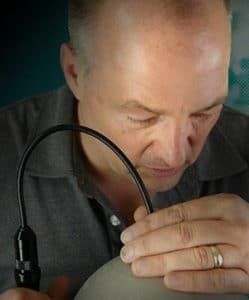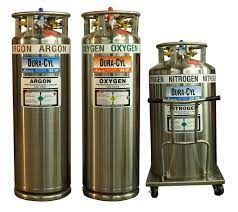
Cylinder Inspection Training: Why a Maintained Cylinder Is a Happy Cylinder
Uncover the importance of gas cylinder inspections and training. Dive deep into ensuring safety, boosting efficiency, and prolonging cylinder life.

A deliver driver was moving a fully charged Oxygen cylinder for transport. The oxygen storage cylinder was 4.5 feet tall and pressurized to approximately 2000 psi. The driver was rolling the cylinder at a slant, using the base of the cylinder as a pivot point/rolling base. The valve was facing his abdomen. It is unknown for certain but likely was not capped. At some point during the moving process, the valve dislodged from the cylinder.
The immediate release of pressure threw the driver 20 feet from the point of rupture. The driver was killed instantly. A resulting autopsy showed broken ribs, fractured spinal column, and lacerations through his abdominal region. The final autopsy conclusion stated that the death was caused by blunt force, the force of gas escaping the cylinder. They did not find evidence of the valve penetrating the victim.
The cylinder itself remained intact. They also found the valve within the area. Specific locations were not documented. The actual information on the cylinder, such as age or extent of use, was not mentioned. It also did not mention if it was within a hydrostatic re-qualification period. The only thing mentioned in the autopsy report was that corrosion was found around the valve area. The speculation was that the valve came loose due to corrosion.
Since this incident caused loss of life, it would have been helpful if more of the investigation focused on the condition of the cylinder. It appeared that they located the cylinder and the valve, but no photographic evidence. The report focused on how the person died, and that it was caused by gas in a pressurized cylinder. It was reported as if they had no knowledge of how a cylinder works, or the unlikely event of a valve dislodging. Since the autopsy report was authored by a medical professional, I would not expect them to understand issues involving a high-pressure cylinder. However, since the cylinder was the cause of death, I would have hoped that focusing on the cause of the valve dislodging might help prevent future accidents.
With minimal knowledge of the cause of the valve dislodging all that can be done to keep others safe is to speculate and follow common safety principals:
Helps protect the valve from damage
Training all employees in the safe handling, filling, and inspection of cylinders should be a goal of all facilities dealing with high-pressure gases. Make all employees aware of proper safety procedures so they can ensure a safe work environment. A knowledgeable employee may be able to detect a hazard and pull the cylinder from service before it becomes harmful to others.

I enjoy continuing to build the business based on safety since 1999. CTS focuses on the inspection of high pressure cylinders, the maintaining of the valves and basic maintenance of high pressure compressor systems. CTS stays current in techniques and tools to train both the new and novice employee. We publish articles, update training tools and have created an APP to assist during the inspection process.
#cylinder #safety #hazmat #training #cylinderinspectiontraining #cylindex

Uncover the importance of gas cylinder inspections and training. Dive deep into ensuring safety, boosting efficiency, and prolonging cylinder life.

Is your composite cylinder showing signs of wear? Discover when to seek a professional repair service in our comprehensive guide.

29 CFR 1910.101 intro Handling cryogenic cylinders involves working with extremely low-temperature gases that pose unique safety risks. To ensure the safe handling, storage, and transportation of these hazardous materials,

Introduction Firefighters encounter many risks while on duty, including hazardous materials and high pressure bottles. High pressure bottles are used for a variety of purposes in firefighting, including powering hydraulic